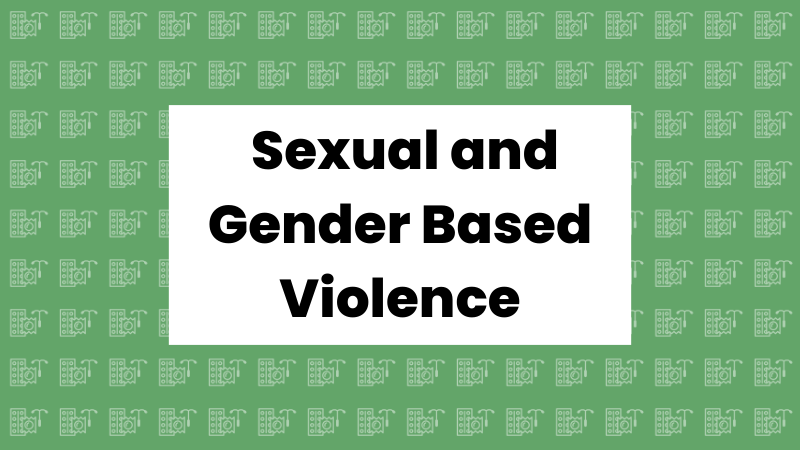Sexual and Gender Based Violence

Sexual and gender-based violence (SGBV) is one of the most prevalent human rights violations in the world. It knows no social, economic or national boundaries. Worldwide, an estimated one in three women will experience physical or sexual abuse in her lifetime.
Sexual and gender-based violence (SGBV) includes for example: sexual harassment, violence, genital mutilation and cutting, rape and child marriage. All these examples violate sexual and reproductive rights. It is important to have anti-sgbv work implemented across health care systems.
Gender-based violence undermines people’s health, dignity, security and autonomy, yet it remains shrouded in a culture of silence. Survivors can suffer sexual and reproductive health consequences, including forced and unwanted pregnancies, unsafe abortions, traumatic fistula, sexually transmitted infections including HIV, and even death.
Sexual and gender based-violence is often used as a weapon of war in conclift settings.
What can be done to end SGBV?
- Health care providers should: raise awareness, learn more about the issue, listen with empathy, provide care and treatment, link women to other services (psychological, legal and financial), speak out to stop violence against women.
- Governments and other stakeholders should: challenge social norms that accept gender based violence, provide timely access to health services, ensure training of all health providers, strengthen evidence and data collection.
- Comprehensive Sexuality Education (CSE) prevents SGBV. CSE includes developmentally and culturally relevant, science-based, medically accurate information on a wide range of topics, including human development, gender identity, sexual behaviours, communication skills and empathy. Through CSE it is possible to challenge the gendered and discriminatory social norms that often is a driver of gender-based violence.
- There are increasing evidence on a range of effective programmes -eg. microfinance initiatives for women linked to training that aims to transform gender relationships, community interventions to change social norms, group education for men and boys combined with community outreach, and protective orders and shelters.
- Alcohol reduction programmes and parenting programmes to reduce child abuse have also shown promising results, because they reduce the risk factors for violence.
Read more:
UNFPA State of World Population 2021 – Claiming the right to autonomy and self-determination
UNFPA and Gender-based violence
UN Action Against Sexual Violence in Conflict
UNFPA-UNICEF Joint Programme to Eliminate Female Genital Mutilatioon (FGM)